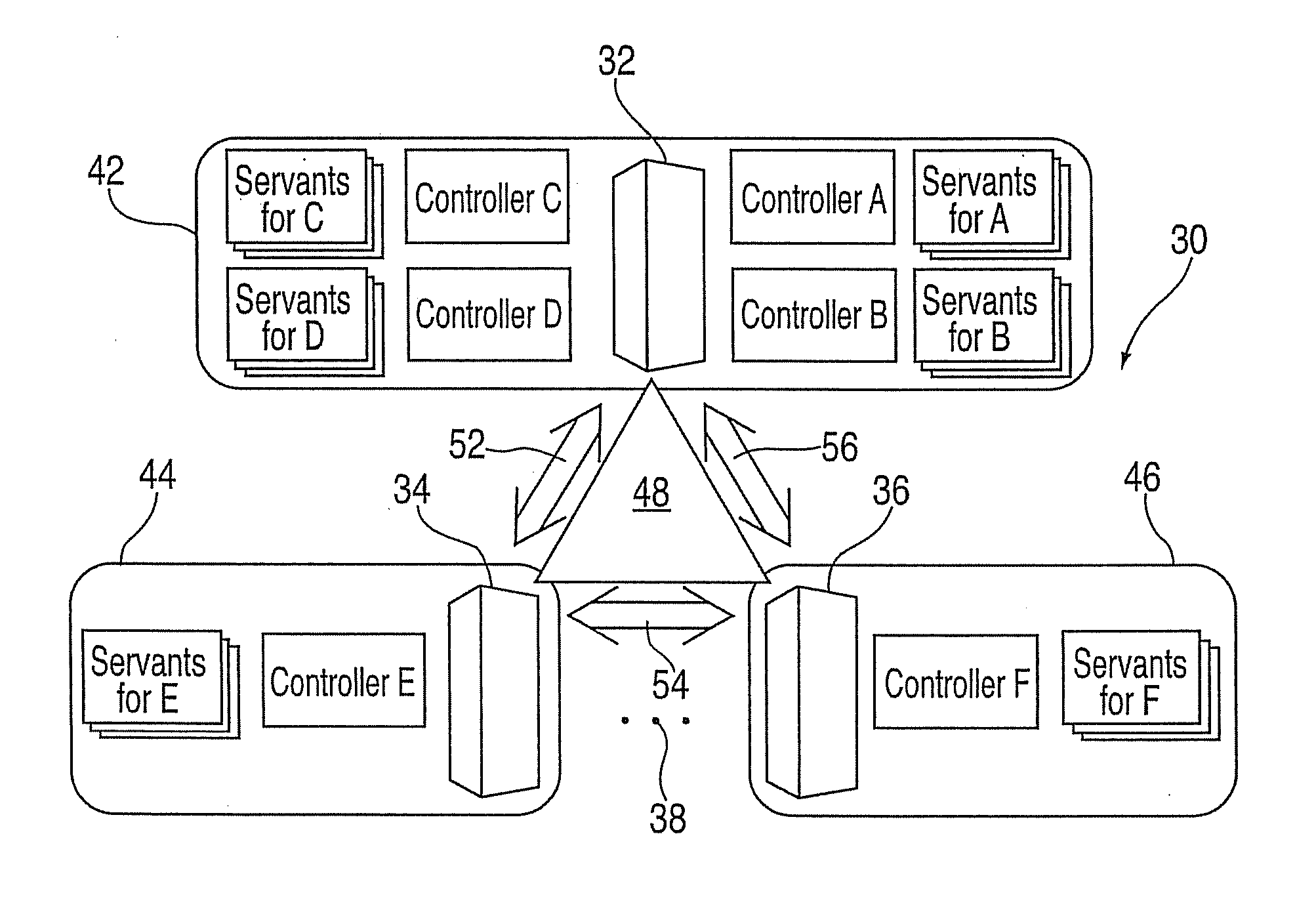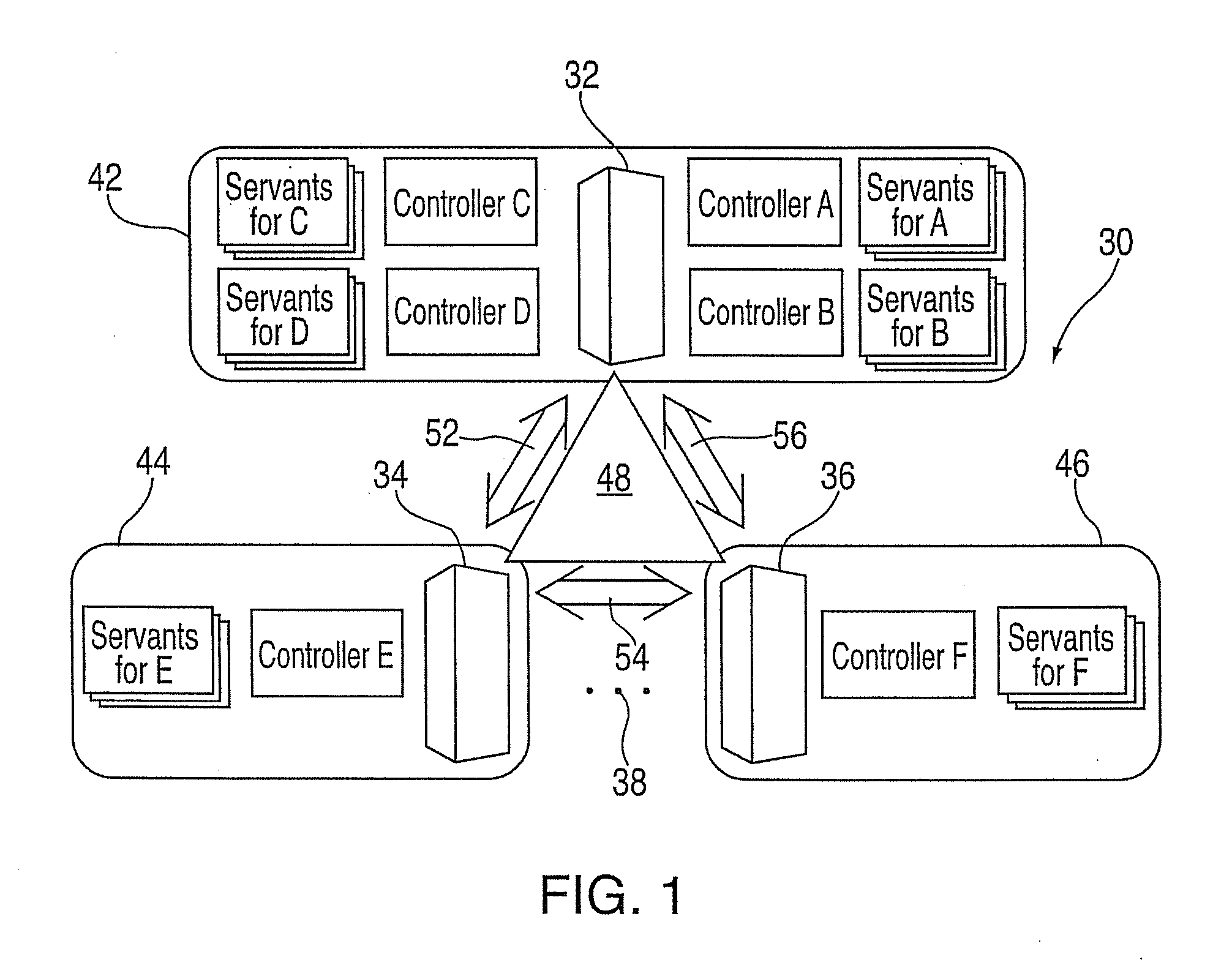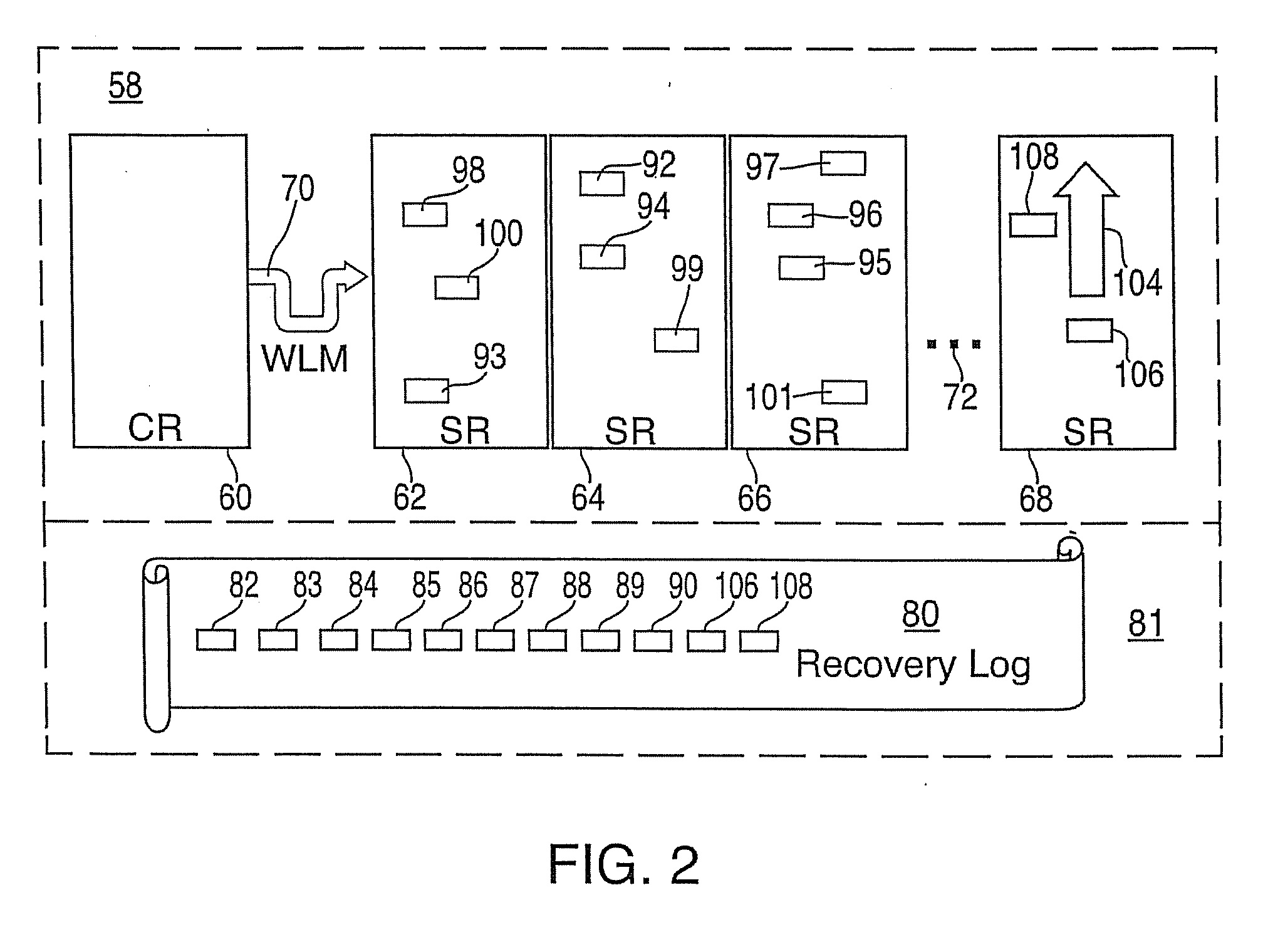Nested Recovery Scope Management For Stateless Recovery Agents
a recovery agent and stateless technology, applied in the field of recovery scope systems, can solve the problems of difficult to determine when the recovery of a protected resource must occur, conventional recovery methods, adversely affecting work that is in flight and executing in a different address space of the server, etc., to facilitate peer level recovery and facilitate the use of a single log stream
- Summary
- Abstract
- Description
- Claims
- Application Information
AI Technical Summary
Benefits of technology
Problems solved by technology
Method used
Image
Examples
Embodiment Construction
[0032] The present invention is illustrated and described herein in connection with certain illustrative embodiments, with the understanding that the teachings of the present disclosure are considered to be exemplifications of the principles of the invention and the associated functional specifications required for implementation of the present invention and its several facets. However, it should be appreciated that the systems and methods of the present invention may be implemented in still different configurations and forms, and that other variations thereof are possible, based on the teachings herein.
[0033] Prior to discussing the embodiments of the present invention, it is useful to look more closely at some of the known characteristics of existing multi-process computer systems having a large dynamic multiple address space. One such class of systems is IBM's z900 series computer systems which may be run under IBM's z / OS operating system. Such systems are often used for large w...
PUM
 Login to View More
Login to View More Abstract
Description
Claims
Application Information
 Login to View More
Login to View More - R&D
- Intellectual Property
- Life Sciences
- Materials
- Tech Scout
- Unparalleled Data Quality
- Higher Quality Content
- 60% Fewer Hallucinations
Browse by: Latest US Patents, China's latest patents, Technical Efficacy Thesaurus, Application Domain, Technology Topic, Popular Technical Reports.
© 2025 PatSnap. All rights reserved.Legal|Privacy policy|Modern Slavery Act Transparency Statement|Sitemap|About US| Contact US: help@patsnap.com



